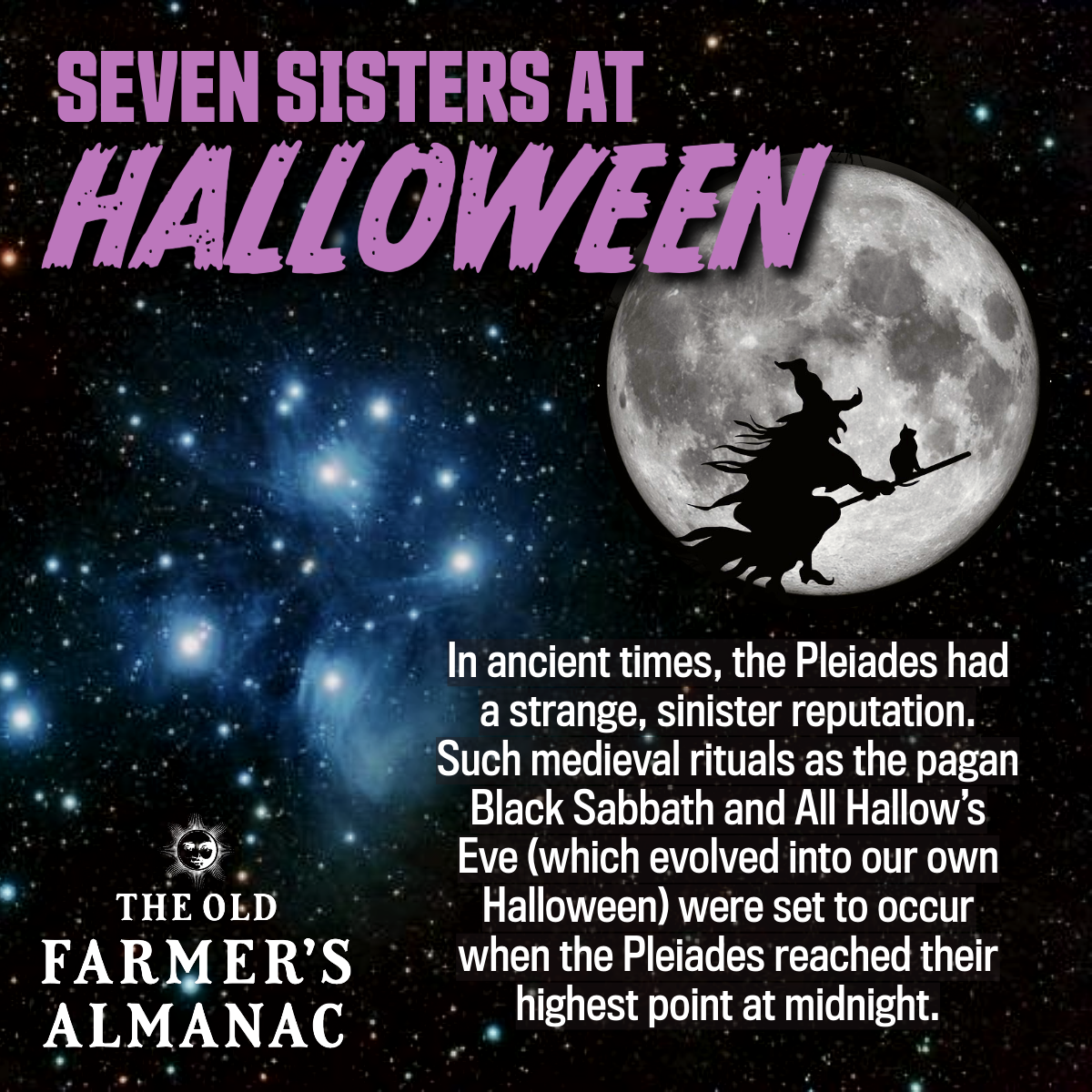
Why is Pleiades called the Seven Sisters?
ADVERTISEMENT
All Hallows Eve is not a pagan ritual...you can tell by the name, it's a holy thing, no matter how YOU celebrate it.
I always enjoy reading Bob Berman’s articles. Fun and informative always!
Nice article and pics, brings back my youth days and discovery. The Pleiades and Orion were my first "getting into it" observations of the heavens. In Spfld VT as a 10 year old, I'd lay on my back for hours in the snow and observe the two constellations with a small hand held telescope, about 6X strong. Never felt the cold. Some people called Orion "The Small Dipper", had to inform them. Always looking at the North Star for bearings.
Still look at the heavens and at times would almost drive myself crazy wondering where the universe begins and ends. Mindbogglingly to think something never ends. Seeing the amazing pics of Hubble and James Webb telescopes on space.com makes me want to see more.
The stars in VT are quite high near the 45 deg lattitude. I go to AL near Pensacola winters now and they are about 15 degs lower to the horizon, about 33 degs lattitude.
Wish I could take a trip in to the Space Station and really see the universe. Been told that humans are made up of star dust and water, think about it, everything on Earth came from the developing universe. Steven Hawking was quite brilliant in his obser4vations and future forecasting.
"Keep looking up".
I love this ! I love everything that has to do with the Night Sky. I wish I had taken Astronomy in H.S. Thank you for the great article.
An interesting article, which you mention had space limitations. I, for one, would much enjoy an extended treatment even in multiple articles about the additional points you (and Catherine) mention.
As a little girl my dad and I would sit in the dunes at the Cape and he would point out the "Stars ". I loved that time with him...the Seven Sisters was one of his favorites. My son has taken over where my dad left off...the "sisters" are just over our home in the late night sky now...thank you for your detailed article. It was wonderful...
Thank you, Bob, for putting Catherine in her place for whining about the lack of mention of Native Americans. The Balkanization of America must cease.
Thank you very a very informative article. Need to get away from light pollution . . . a bit too chilly to go camping! Happy Halloween!
Wow, what an interesting read. Thanks for this article.
I believe that Catherine carries a lot of hurt...I immigrated to Canada in 1968, I was 10 years old and I never, throughout the remainder of my school years, ever learned anything about the indigenous people, only "what a bunch of losers and drunks" they all were. I believe that it should be part of the school curriculum...all of their History,BAD & good.










